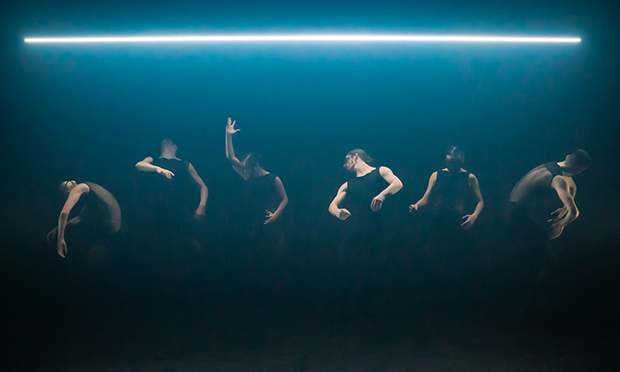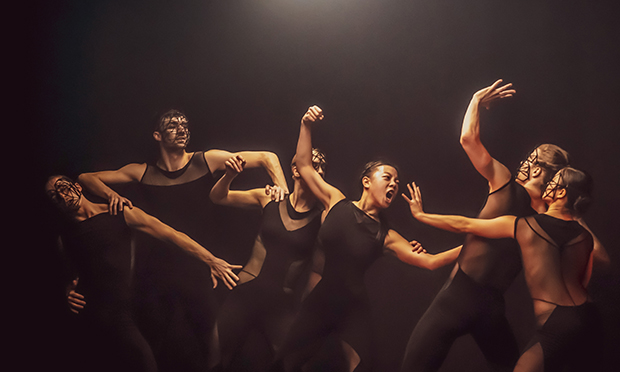Overflow, Sadler’s Wells, dance review: ‘A moving, breathing piece of creativity’

As the good-looking, moneyed masses of Sadler’s Wells filter into the space, they are met by an atmosphere that looks worryingly like a forest fire.
Haze swells around and floodlights overhead cast eerie shadows. Ominous portents of what is to come from Alexander Whitley’s new piece Overflow.
Known for pushing the boundaries of dance, his dedication to new technology in this show is no different.
Into black we are plunged, and a floating strip of light illuminates six dancers in netting leotards and web-like masks created by artist Ana Rajcevic. They all start to nod in unison with Rival Console’s industrial techno-esque score. Such a simple start, and so very effective. The piece progresses from there, but the same sci-fi feel continues throughout.
They really get their money’s worth from the strip light. Its flexibility creates different moods and effects simply by using colour and flashing different points along its long body. At points, it hypnotises like a hunting cuttlefish, morphing into a small searching eye and flashing like lightning. Officially called a “kinetic light sculpture”, this, coupled with Guy Hoare’s uncompromising lighting, creates the feel of a tense futuristic battleground. Red lasers, bright rainbows, and blue washes puncture the darkness that prevails throughout piece.

The dancer’s supple bodies are always under scrutiny from the aggressive technology around them. At points the venue resembles the famous German superclub Berghain rather than the inside of Sadler’s Wells – a truly Orwellian transformation.
The choreography itself is stark, brutal, and mesmerising. From simple repeated moments like the nodding to some lovely solo work, everything is informed by the clashing lights and sound. No trick is missed.
Solos are positioned between two crossing floodlights, the dancer extending their fingers into the lights, creating terrifying spindly shadows across the stage. The whole company hides under the spinning strip light, seemingly frozen in the flashes of white that flood the stage.
Undoubtedly there is skill here, but it is less about marvelling at the dancers’ technique (like a lot of ballet) more than watching body parts emerge out of the perpetual gloom. The piece is both shocking and unnerving.
One of the moments that rammed this home in my mind is a small but very clever section. The floating light morphs itself into a small moving eye that sweeps the stage, searching for something. The dancers change out of their revealing black get-ups and are almost completely naked, or at least we think they are. The use of shadow and this tiny point of light means you are never sure. All we see is contorted bodies, limbs, backs, beautifully lit, moving as if in pain away from the hunting lidless eye.

I know ballet loves showing a little bit of skin, but this moment was such an inventive way of using the body at its most vulnerable to create a layered and disconcerting effect. The bodies join in a squirming mass of legs and arms, and the eye turns into a band of swinging light, passing over this orgiastic mass.
As with everything in Overflow, the lighting allows us to see precisely enough, yet never too much. The sense of control within the piece is astounding. Whitley knows what he wants to convey and explore. His dancers execute this vision with energy and power but almost more importantly Hoare’s lighting and The Children of Light’s spinning alien strip control what we see and when we see it.
This is less a dance show and more a total experience of art – a moving, breathing piece of creativity. Exploring the ways humans interact with technology and the power the digital world holds, it is interesting that the dancers almost lose their humanity somewhere in the gloom of the stage. Something that I am sure, like everything else Whitley fully intended.
I leave Overflow shellshocked and, sadly, unable to look at my Alexa in quite the same way again.
Alexander Whitley Dance Company — Overflow was performed in May at Sadler’s Wells Theatre.
